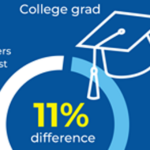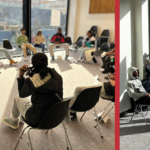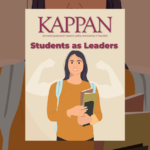In case you hadn’t noticed, there’s been a bit of a controversy the past couple of weeks over how well or poorly education journalists have been covering higher education issues — and what if any effect the coverage has on public perceptions and policymaking around college issues.
FiveThirtyEight’s Ben Casselman kicked things off with his March 30 piece (Shut Up About Harvard):
“It’s college admissions season, which means it’s time once again for the annual flood of stories that badly misrepresent what higher education looks like for most American students — and skew the public debate over everything from student debt to the purpose of college in the process.” In reality, “most students never have to write a college entrance essay, pad a resume or sweet-talk a potential letter-writer.”
In his piece, Casselman cites the Washington Post, Elite Daily, Huffington Post, New York Times, Wall Street Journal, Atlantic. And media mis-coverage of higher education doesn’t end with admission, either, according to Casselman, who notes that college students and colleges just aren’t reflected in the traditional model any more, though they’re often covered that way. “In total, less than a third of U.S. undergraduates are ‘traditional’ students in the sense that they are full-time, degree-seeking students at primarily residential four-year colleges.”
Even when media outlets cover more fundamental issues, like student debt, they tend to focus on the most extreme examples, according to Casselman.
“Half of the colleges and universities in the United States have become less selective during the past 50 years, according to research by Stanford University’s Caroline Hoxby.”
In response, EWA invited The Atlantic’s Alia Wong onto its radio show to talk about the issue and about The Atlantic’s coverage of higher education (Competitive College Admissions: Too Much Hype?): “Are education reporters unwittingly contributing to the hysteria over elite college admissions? … And how did the perception of college admissions as inaccessible to most — when the reverse is actually more accurate — become so pervasive?”
Wong had written a response to Casselman in which she argued that “much, if not most, of The Atlantic’s higher-education coverage has been about [broader, more relevant] issues.”
“We’ve written about the challenges faced by single moms trying to get their college degrees. We devoted an entire cover story to community colleges. We lamented the state of public higher-education systems in states such as Louisiana, Kansas, and California. We looked at the states where high-school drop-out rates are rising despite positive trends nationwide.”
Asked about the broader issue, Inside Higher Ed’s Scott Jaschik notes “Every year, this time of year, we see this. It is not remotely new.”
If it were merely a peculiar journalistic fascination with an obscure topic, that would be one thing. But the cumulative impact of the journalism focused on elite schools and admit rates skews public perception and policy priorities, according to Jaschik and others.
How hard it is to get into some schools “actually isn’t an important issue in American higher education,” he noted. “I’m really just not worried about Harvard rejects.”
The focus on elite schools overshadows other, more important trends, such as the big change in college admissions for state schools like Cal State and CUNY that have become more competitive (and less diverse). Changes in admit rates at these so-called “access institutions” are a real issue, he says.
The reason these stories get assigned and written is easy to figure out, according to Jaschik. “Most editors either went to or want their children to go to such places, so they’re interested in those.” About this, Casselman agrees.
And of course America is all about aspirations, so even kids and families who are in no position to think of going to an Ivy League school might like to think about it.
But the stories create terrible messages for American society, agree Jaschik, Casselman, and Selingo.
Another issue that doesn’t get covered enough is the lack of sections for community colleges who have open admissions. “Lots of community colleges open admissions don’t have spaces in class for the students they admit,” notes Jaschik. “That’s a crisis.” Ditto for things like Summer Pell Grants, which were eliminated a few years ago without that much coverage or public controversy.
How should reporters fight off editors who want these admit rate stories and other assignments that don’t reflect the real world of higher ed for most readers? “I can’t tell them to disobey their editors, but I do tell them to push back.” He also recommends that they think about covering higher ed as a policy issue, not a consumer issue, looking at the big picture as well as the human interest or individual decisionmaking.
He’s not very hopeful about changes in the short term. “Whenever I’m on a panel I talk about it. But then they go really on doing it.”
That’s pretty much the same way I feel about issues that are over- or mis-covered in K-12 education — the hero and villain teachers, the controversial figures (Randi Weingarten, Campbell Brown, etc.), charter school networks, school closings, Teach For America, unproven new models.
We know that they’re over-done, and we know why. But, lost in our own filter bubbles and chasing pageviews and competitors, we just can’t seem to shame folks into covering stories that are more representative and relevant to readers. Even when we do, we sometimes can’t figure out how to get readers and colleagues to pay attention.
ABOUT THE AUTHOR

Alexander Russo
Alexander Russo is founder and editor of The Grade, an award-winning effort to help improve media coverage of education issues. He’s also a Spencer Education Journalism Fellowship winner and a book author. You can reach him at @alexanderrusso.
Visit their website at: https://the-grade.org/












